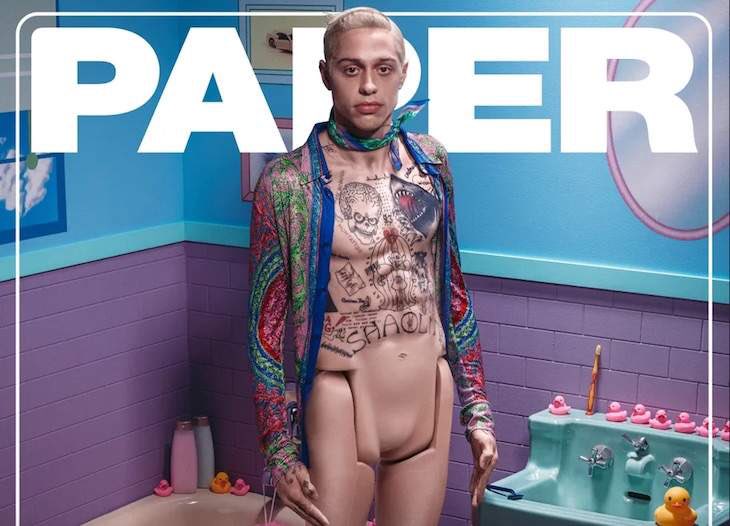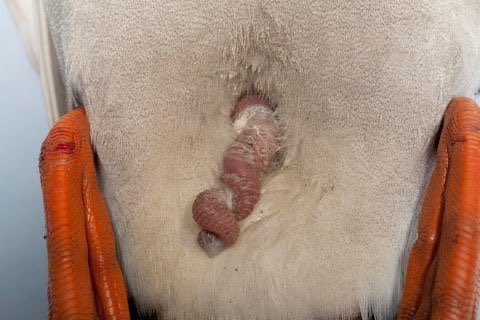Are you having a boring Sunday? Letu2019s fix that and talk about duck d*cks and vaginas. They are...something, and I guarantee youu2019ll never look at a duck the same way.
TW: graphic discussions of sexual violence in the animal world to follow.
TW: graphic discussions of sexual violence in the animal world to follow.
Like reptiles, birds have just one external hole called the cloaca. To mate, males and females evert and touch a chamber of their cloacas together, thus transferring sperm. Most bird sex lasts only a couple seconds.
Hereu2019s what it looks like. Granted this is a little more awkward because this crow is mating with a life-like dummy, and not a live, willing bird, but you get the idea.
2nd thing to know is that, in part because of this, itu2019s difficult for males to forcibly inseminate an unwilling partner. Another reason itu2019s hard is because the powerful waste excretion muscles in her cloaca can also be used to eject unwanted sperm.
In other words, for most birds, inseminstion requires active female participation. We think that in most of the bird world while promiscuity can be common even among monogamous species, forced copulations are therefore not so much. Thereu2019s still much to be learned here, however.
Ducks though, well ducks are apart of that 3% group where during the breeding season the males posses a penis. And not just any ol penis. But according to evolutionary biologist and duck d*ck expect Dr. Patty Brennan, the most morphologically complex penis of any vertebrate.
So what makes these penises so unique? Although the details vary across species, their counter clockwise spiral shape and spiny texture are not to be ignored. This, for example, is the mallardu2019s penis which can be up to 5in  https://abs.twimg.com/emoji/v2/... draggable="false" alt="ud83dudcf8" title="Camera with flash" aria-label="Emoji: Camera with flash"> Getty
https://abs.twimg.com/emoji/v2/... draggable="false" alt="ud83dudcf8" title="Camera with flash" aria-label="Emoji: Camera with flash"> Getty
Not only are duck penises often twirly spiky phalluses from hell, but they can erect and ejaculate in LESS THAN A THIRD OF A SECOND. They are basically sperm shooting ballistic missiles.
How is this physically possible? For one, when the penis is inside the male, itu2019s inside out. Itu2019s only once theyu2019ve made cloacal contact that the penis everts. Itu2019s also flexible and driven by lympathic rather than vascular pressure.
So why all this complexity? Well the evolutionary origins are still being studied and debated but part of the equation certainly involves their real bummer of a mating strategy.
See while some species of ducks form a mated pair for the breeding season that she had a large say in choosing, forced extra pair copulations (FEPC) even in those systems range from not uncommon to extremely common.
Worse yet, these encounters are often brutal, injuring or even killing the female in the process.
The more common it is, the larger and more complex the penis tends to be. The record holder is the Argentine lake duck whose phallus can measure half a meter long.
The idea being that the longer the penis is the better chance the male has of inseminating the females. And those spikes? Theyu2019re handy for scrubbing away the previous maleu2019s sperm. Cats have also figured this out. https://m.youtube.com/watch?v=3UVw7cgv36A">https://m.youtube.com/watch...
Dr. Brennan has also discovered that in some species like the lesser scaup if the competition is stiffer leading up to the beeeding season (i.e. more males around), then males can actually produce a larger penis than they did the year before. https://bioone.org/journals/The-Auk/volume-134/issue-4/AUK-17-114.1/Evidence-of-phenotypic-plasticity-of-penis-morphology-and-delayed-reproductive/10.1642/AUK-17-114.1.pdf">https://bioone.org/journals/...
As is not atypical in science, thereu2019s a bias in our understanding of this biology toward males. Itu2019s a bias Freud would be proud of and scientists should be ashamed of.. https://journals.plos.org/plosbiology/article?id=10.1371/journal.pbio.1001851">https://journals.plos.org/plosbiolo...
But thatu2019s not to say we donu2019t know anything about the complimentary female biology. And if you think her biology has just stood by while males rob her of her reproductive choices youu2019re dead wrong.
In fact duck vaginas are arguably more complex and interesting. For example remember how the males have counter clockwise spirals? Well many females have clockwise spiraled vaginas. That means that unless sheu2019s relaxed and inviting, the penis cannot fully evert inside her.
She also has dead-end tubes where she can redirect the penis and then eject his unwanted sperm. Her vaginal walls are also thicker to ensure he canu2019t perforate her during his missile strike. https://m.youtube.com/watch?v=RFUJ68hrEFU">https://m.youtube.com/watch...
Sadly, this dynamic has basically resulted in an evolutionary arms race where females try to maintain reproductive autonomy and males try to steal it. And itu2019s not just explicitly sexual stuff either.
Even before the breeding season male mallards often gang up and attack females. Why hurt a potential partner? One hypothesis is the CODE hypothesis or the Creation Of a Dangerous Environment for Females.
Basically, force females to barter future sexual opportunities for protection now. Itu2019s a coercive way to induce monogamy, which in species without any male parental help (like mallards) is mostly just advantageous to him.
So there you have it. Duck reproduction is a dark, fascinating area of study with applications far beyond just understanding ducks. Quack quack!

 Read on Twitter
Read on Twitter
 Getty" title="So what makes these penises so unique? Although the details vary across species, their counter clockwise spiral shape and spiny texture are not to be ignored. This, for example, is the mallardu2019s penis which can be up to 5in https://abs.twimg.com/emoji/v2/... draggable="false" alt="ud83dudcf8" title="Camera with flash" aria-label="Emoji: Camera with flash"> Getty" class="img-responsive" style="max-width:100%;"/>
Getty" title="So what makes these penises so unique? Although the details vary across species, their counter clockwise spiral shape and spiny texture are not to be ignored. This, for example, is the mallardu2019s penis which can be up to 5in https://abs.twimg.com/emoji/v2/... draggable="false" alt="ud83dudcf8" title="Camera with flash" aria-label="Emoji: Camera with flash"> Getty" class="img-responsive" style="max-width:100%;"/>


